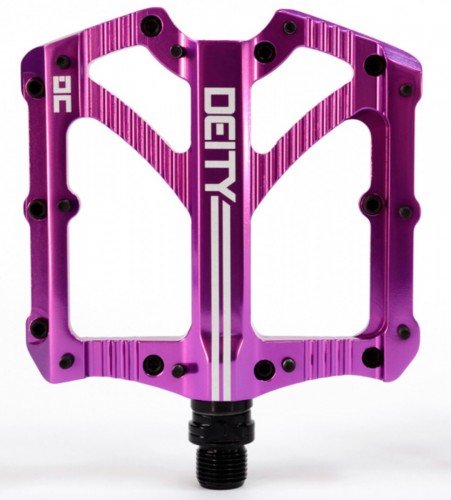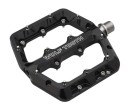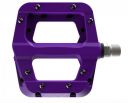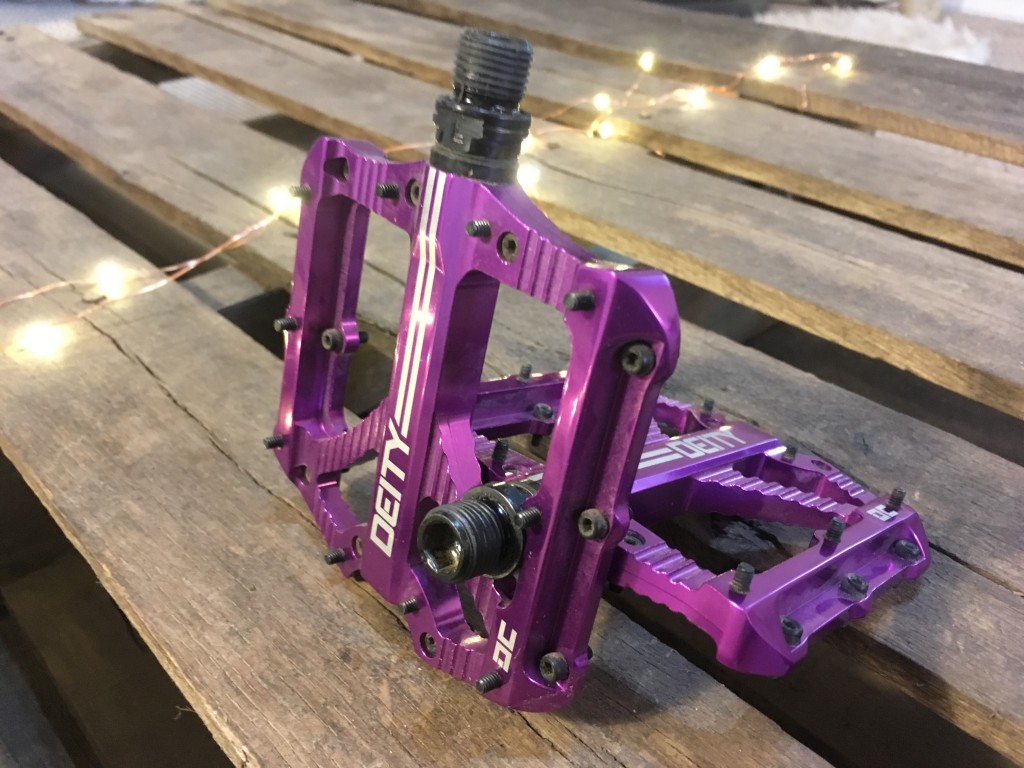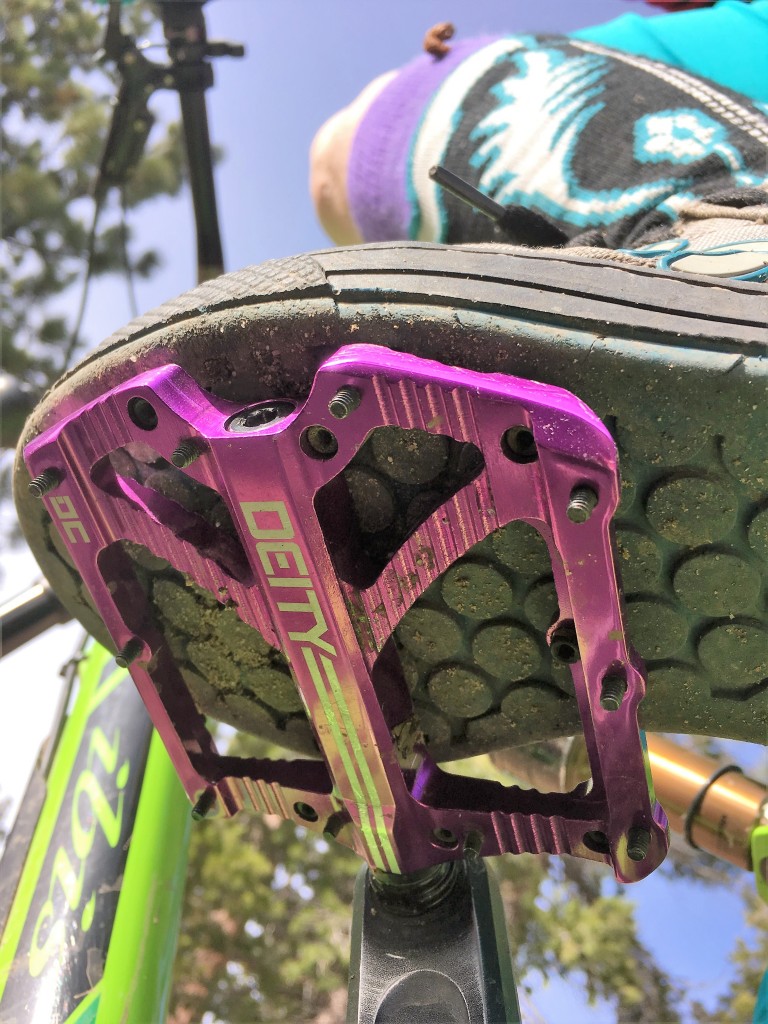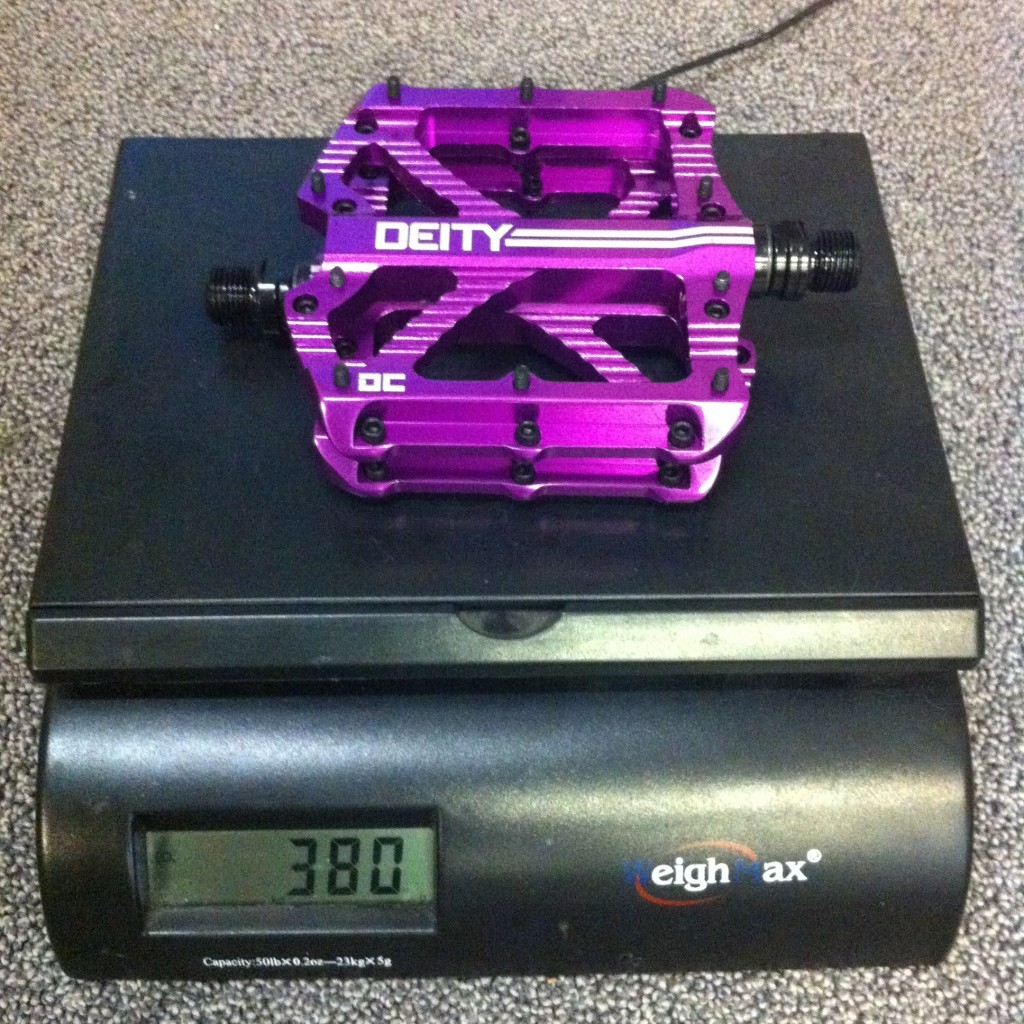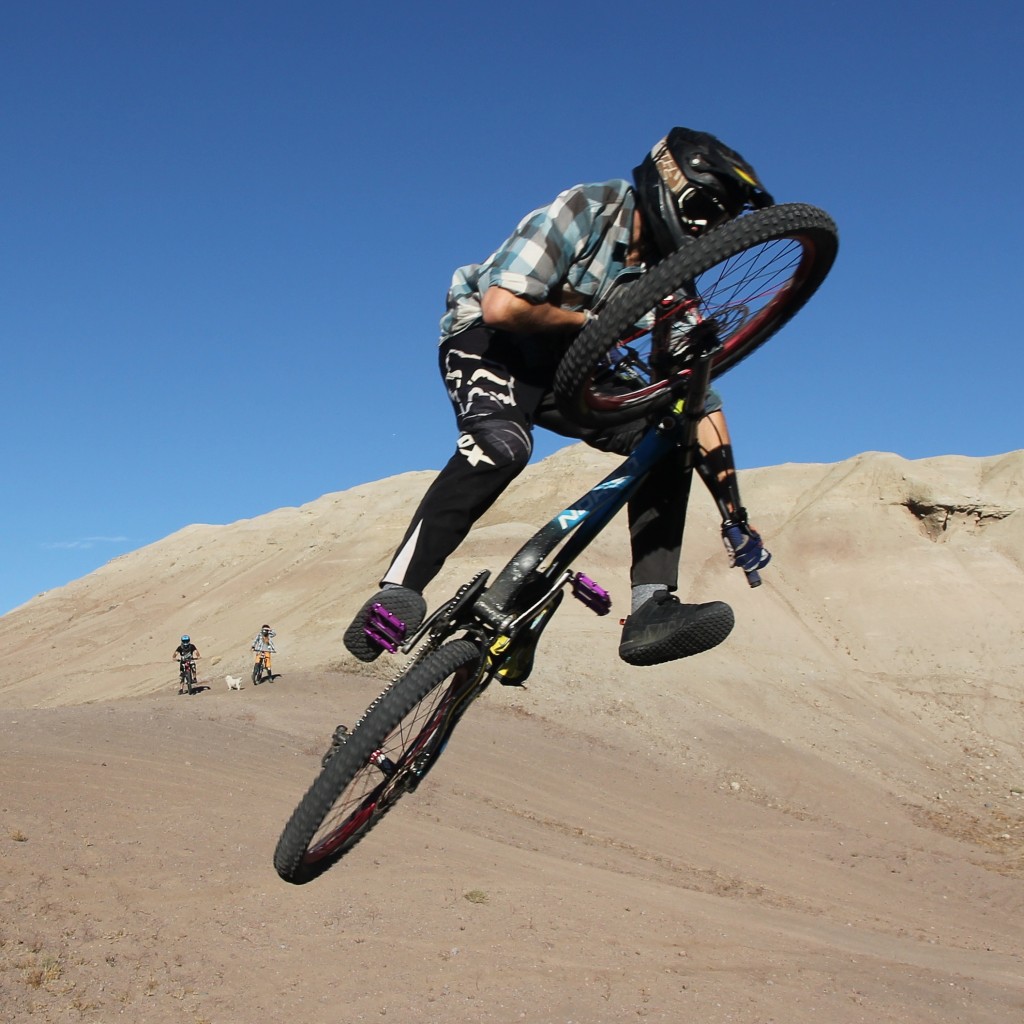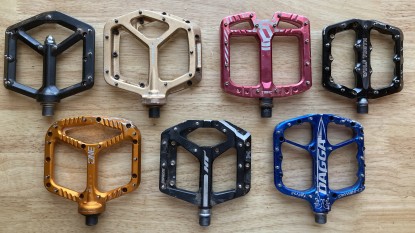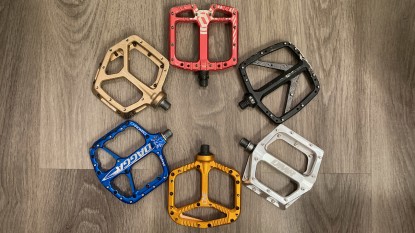Deity Bladerunner Review
Our Verdict
Compare to Similar Products
 This Product
Deity Bladerunner | |||||
|---|---|---|---|---|---|
| Awards | Best Flat Pedal | Best Gravity Flat Pedal | Best Pedal for your Buck | Best On A Tight Budget | |
| Price | $150 List $149.99 at Backcountry | $199.95 at REI Compare at 3 sellers | $180 List $169.00 at Backcountry | $29.73 at REI Compare at 4 sellers | $27 List $24.99 at Amazon |
Overall Score  |
|||||
| Star Rating | |||||
| Bottom Line | Great pedal technology in a slim, sleek package | This pedal provides excellent grip, traction, and support and is easy to service | If you're searching for maximum grip, look no further | Less-expensive flat pedal option for those who like to put their equipment to the test | A budget oriented pedal that offers adequate grip and a midsize platform but may be less apealing compared to established brands |
| Rating Categories | Deity Bladerunner | Wolf Tooth Waveform | Deity TMAC | Race Face Chester | Fooker Nylon Fiber |
| Grip and Traction (25%) | |||||
| Platform (25%) | |||||
| Mobility (20%) | |||||
| Servicing (15%) | |||||
| Weight (15%) | |||||
| Specs | Deity Bladerunner | Wolf Tooth Waveform | Deity TMAC | Race Face Chester | Fooker Nylon Fiber |
| Measured Weight (per pair) | 380 g | 373 g | 440 g | 358 g | 370 g |
| Traction Pins (per side) | 10, 2.5 mm hex head bottom loading | 11, 3 mm head bottom loading | 14, 2 mm hex head top loading | 8, 2.5 mm hex head bottom loading | 8, 2.5 mm hex head bottom loading |
| Measured Platform Dimensions (millimeters) | 100 mm x 103 mm | 105 mm x 99 mm | 110 mm x 105 mm | 110 mm x 101 mm | 110 mm x 100 mm |
| Platform Profile (millimeters) - not including pins | 11 mm leading and trailing adges, 14mm at axle. | 13.96 mm perimeter, 12.63 axle | 19 mm leading and trailing edges, 14 mm at axle | 14 mm leading and trailing edges, 17 mm center of spindle | 14 mm at edges, 18 mm at axle |
| Concavity | 3 mm difference from effective edges to center of axle | Dual concave 1.5mm difference permieter to center | 5 mm difference from effective edges to center axle. Super concave 2.5mm pedal profile per side. | 3 mm difference from effective edges to center of pedal | 4 mm difference from effective edge to center of pedal |
| Q Factor / Distance from cranks to furthest pin | 111 mm | 100mm | 113 mm | 103 mm | 103 mm |
| Bearings | Multi micro triple sealed bearings and Deity DU bushing internals | Three sealed cartridge bearings and one igus bushing | Multi micro sealed bearings and Deity DU bushing internals | Cartridge bearings and DU bushings | 3 sealed cartridge bearings |
| Body Material | Extruded 6061-T6 aluminum | 6061-T6 Aluminum | Forged 6061-T6 aluminum | Nylon Composite | Nylon Fiber |
| Pedal Wrench Type | 15 mm pedal spanner, 8mm hex | 8 mm hex | 15 mm pedal spanner, 8 mm hex | 15 mm pedal spanner, 8 mm hex | 8 mm hex |
Our Analysis and Test Results
The Bladerunner is one of the thinnest pedals in Deity's lineup with a relatively large 103 x 100mm footprint, 10 pins per side, and concavity achieved through varying pin height. The CNC-machined aluminum pedal body is beautifully crafted, and these pedals look fantastic.
Performance Comparison
Grip/Traction
Each pedal has 20 grub screw traction pins (10 per side) that are installed with a 2.5 mm allen key. All the heads are tucked away safely from accidental impacts and installed from underneath. If you do manage to break or bend a pin, a bag of extra pins is included. We tend to like the grip of grub screws better than other traction pins.
Despite the better grip usually accompanied by grub screws, we felt the platform design of these pedals prevented them from fully optimizing their potential. The front and rear pins are taller than the ones adjacent to the axle, but our soft rubber soles sucked up the height difference. We could still feel our midfoot area ever-so-slightly elevated along the axle compared to the rest of our foot. While they performed admirably on the trail, the Bladerunner was a top performer in freestyle dirt jumping and bike park, allowing for smoother foot-to-pedal engagement and disengagement during tricks.
Platform
Deity extruded 6061 T6 aluminum into a shape that measured just a tad over 11mm at the front and rear edges. The midsection maintains a bit of a gut and measures in at a respectable 14mm. Inside the axle is a Chromoly steel axle, two sealed bearings, and a DU bushing. The areas between the axle and the leading and trailing edges feature horizontally-ribbed aluminum. Clean lines and sharp angles offered little opportunity for mud to collect anywhere on these pedals. With the front and rear of the pedal being so thin and the middle a bit taller, the actual profile of the pedal is slightly convex.
To provide a more desirable foot-cradling shape, six taller traction pins are used front and back, while four shorter ones are used closer to the axle. Despite the profile inversion provided by crafty pin arrangement, the axle could still be felt underfoot and was only moderately effective at increasing grip or traction. The reduced traction made this pedal a favorite for use in freestyle dirt jumping and bike park shenanigans. It fell a hair shy of that planted, locked-in feeling we sought for downhill use. At 103 x 100 mm, the platform was not the largest, but its squared shape supported the outsides of our feet reasonably well.Pedal Mobility
The Chromoly axle spins on two sealed bearings on the near side and a proprietary DU bushing on the further end. Everything remained smooth throughout our three-month test period, and we never experienced any unwanted pedal play. These pedals had a looser feel spinning about the axle compared to many others but were not so free-spinning that they caused any problems when landing tricks. The pedal flop was also not a concern during trail riding.
Servicing
The Bladerunners took a solid beating while testing. Pins were worn down, and it's important to get the pedals as clean as possible when working on them to minimize dirt getting into threads and bearings. This pedal shares the same internals as others offered by Deity and rebuild kits and pins are available. Overall, the Bladerunners are well built, and with fresh pins, the pedals can last a long time.
A 5mm Allen is used to remove a threaded end cap that keeps all the trail dirt and grime out. Once the end cap is removed, there is another threaded 5mm spacer inside. This spacer fills out the interior of the pedal body where the spindle terminates inside. By using a shorter, stubby Chromoly axle, less stress is placed on the spindle, making it less likely to experience forces that could potentially bend it out of shape. Another great feature is that the pedal can be serviced without removing them from the cranks.
Weight
Despite their thin profile, the Bladerunner comes in at 380-grams for the pair. The strength-to-weight ratio of these pedals seemed pretty impressive as we nailed them on rocks many times, only to scratch the pretty purple anodized finish. Very little in the way of excess material was used in the design of these pedals.
Value
A fair amount of consumers might be willing to buy the Bladerunner based on looks alone. They're so sexy with their laser-etched logos, textured and machined aluminum surfaces, and they come in cool Skittle colors that add flair to your bike that will surely become a conversation piece at the trailhead. If you're looking for a super grippy pedal, your dollars are better spent elsewhere. Riders that value lightweight, mobility and surface area can feel confident about investing in these pedals.
Conclusion
Often what's good for one type of riding can be bad for another. The list of traits you look for can range from getting down a hill the fastest to boosting a jump the highest. We found this pedal to be a good match for those who like to do it all. It's not the cheapest, lightest, largest, or grippiest. But it will take you from a morning spinning tailwhips at the bike park, to an afternoon shuttling downhill laps. We weren't crazy about the lack of concavity in the platform design and felt that trying to achieve the same result with the traction pins fell short in terms of grip performance. That said, we feel these are a great looking and versatile pedal for those who appreciate a little foot mobility.


